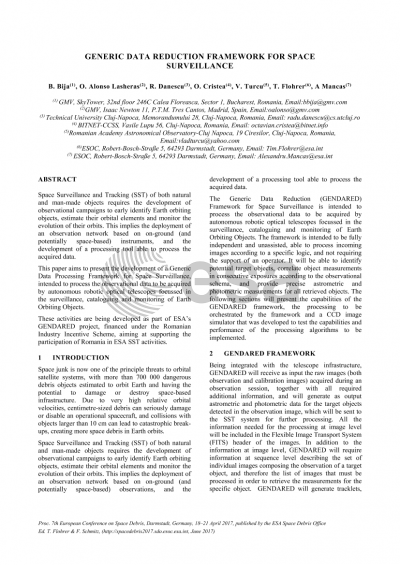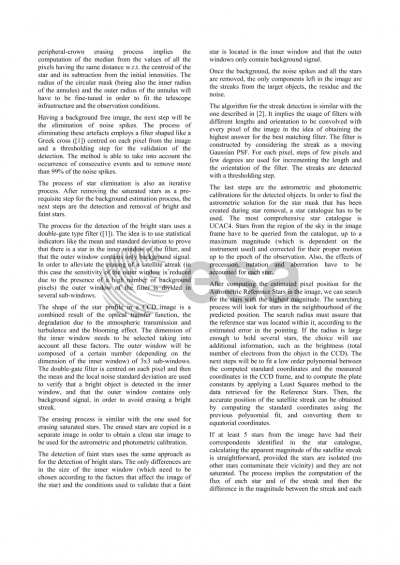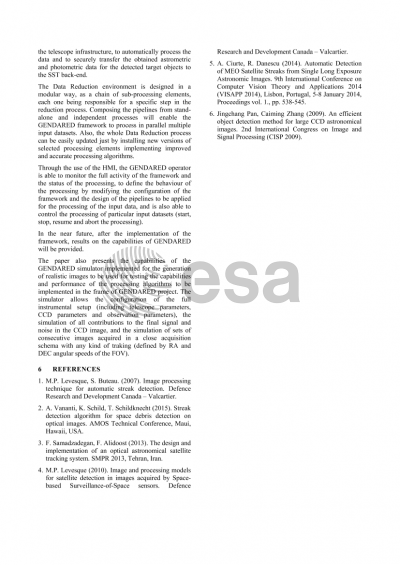Document details

Abstract
Space junk is now one of the principle threats to orbital satellite systems, with more than 700 000 dangerous debris objects estimated to orbit Earth and having the potential to damage or destroy space-based infrastructure. Due to very high relative orbital velocities centimetre-sized debris can seriously damage or disable an operational spacecraft and collisions with objects larger than 10 cm can lead to catastrophic break-ups, creating more space debris in Earth orbits.
The overall aim of the Space Surveillance programmes is to support utilisation of and access to space for research or services, through providing timely and quality data, information, services and knowledge regarding the environment, the threats and the sustainable exploitation of the outer space surrounding our planet Earth.
Space Surveillance and Tracking (SST) of both natural and man-made objects requires the development of observational campaigns to early identify Earth orbiting objects, estimate their orbital elements and monitor the evolution of their orbits. This implies the deployment of an observation network based on on-ground (and potentially space-based) observations, and the development of a processing tool able to process the acquired data.
This paper aims to present the development of a Generic Data Processing Framework for Space Surveillance, intended to process the observational data to be acquired by autonomous robotic optical telescopes focussed in the surveillance, cataloguing and monitoring of Earth Orbiting Objects. The framework is intended to be fully independent and unassisted, able to process incoming images according to a specific logic and not requiring the support of an operator. It will be able to identify potential target objects, correlate object measurements in consecutive exposures according to the observational schema and provide precise measurements of the position and brightness for all retrieved objects.
The work aims to identify and analyse the Image Reduction algorithms that are fast enough in order to allow the processing of high image acquisition rates in (near) real time in order to process the images taken in a closely continuous acquisition schema. Also, the algorithms will need to cope with the different acquisition schemas that will be used for the built-up and maintenance of the Earth-orbiting objects, mainly sidereal tracking, staring and precise orbit tracking. The whole data reduction process is intended to be designed in a modular way, composed as a chain of sub-processing steps. This strategy allows for an easy integration of new or improved algorithms that can be developed in the future.
The Generic Data Reduction Framework is to be integrated, verified and validated in a realistic environment using telescope infrastructure available at the Astronomic Institute from Cluj-Napoca, Romania. The activity will be focused first on the integration of the software tool with the observational environment, and the verification of the interfaces and data flows between different components (telescope, reduction SW tool, other external subsystems). Then, a more exhaustive verification and validation activities will be carried out using real observations acquired in real and operational conditions. The activity will assess the capability and accuracy of the reduction tool in this operational environment, providing some feedback on potential improvements in both operational and processing aspects.
These activities are being developed as part of ESA’s GENDARED project, financed under the Romanian Industry Incentive Scheme, aiming at supporting the participation of Romania in ESA SST activities.
Preview










